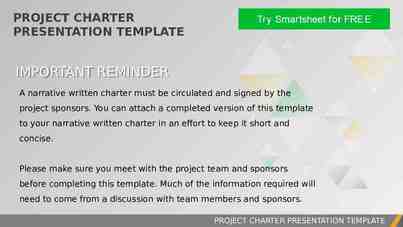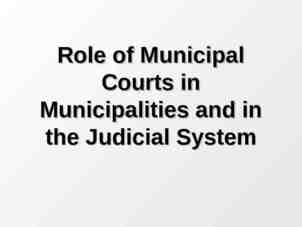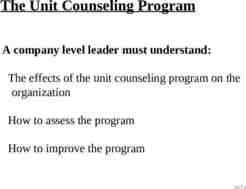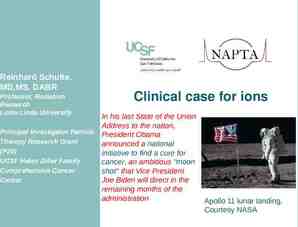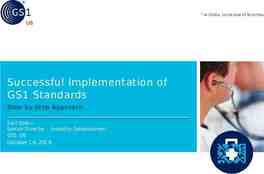AMERICAN CORRECTIONS Twelfth Edition Chapter 16 Making It:
25 Slides841.75 KB

AMERICAN CORRECTIONS Twelfth Edition Chapter 16 Making It: Supervision in the Community 2019 Cengage. All rights reserved.

Learning Objectives (1 of 2) 1. Describe the major characteristics of the postrelease function of the corrections system. 2. Define community supervision and revocation of community supervision. 3. Explain how community supervision is structured. 4. Analyze the constraints on community supervision. 2019 Cengage. All rights reserved.

Learning Objectives (2 of 2) 5. Describe residential programs and how they help people on parole. 6. Identify the major problems that people on parole confront. 7. Understand why some people on parole are viewed as dangerous and how society handles this problem. 8. Describe the effectiveness of postrelease supervision. 2019 Cengage. All rights reserved.

Overview of the Postrelease Function (1 of 5) Conditions of Release: – Restrictions on conduct that people on parole must obey as a legally binding requirement of being released. Parole boards only release about one-fourth of people from prison (down from 65 percent in 1976). 80 percent of those released now under parole supervision (compared to 60 percent in 1960). No truly “clean” start is possible. Important to remember that the experience of a “former convict” is almost as stigmatizing as that of a “convict,” and can be more frustrating. 2019 Cengage. All rights reserved.

Overview of the Postrelease Function (2 of 5) Community Supervision: – Restrictions on people on parole: Personal and material problems are staggering – Most are unskilled or semiskilled, and have trouble finding any type of reasonable employment. – Nearly one-fourth of people on parole fail within six months. – With little preparation, people move from the structured environment of the prison into a complex/temptation-filled free world. 2019 Cengage. All rights reserved.

Overview of the Postrelease Function (3 of 5) Revocation: – Parole revoked for two reasons: 1. Committing a new crime 2. Violating conditions of parole (technical violation): – Revocation usually involves noncriminal conduct (e.g., failure to change address) – Most occur when person on parole is arrested on a serious charge or cannot be located. – Parole is a privilege. – The Supreme Court requires a two-step process involving probable cause and potentially returning the individual to prison. 2019 Cengage. All rights reserved.

Overview of the Postrelease Function (4 of 5) Two-stage Revocation Proceeding: 1. Parole board determines whether there is probable cause that a violation has occurred. The person on parole has the right to: Be notified of charges Be informed of witnesses Be heard Present witnesses Confront parole board witnesses (safety) 2019 Cengage. All rights reserved.

Overview of the Postrelease Function (5 of 5) 2. Parole board decides if the violation is severe enough to warrant return to prison. Parole agency has several options: – Return person on parole to prison – Note violation but strengthen supervision – Note violation but take no action Highest rate of failure in first year Number of revocations is hard to determine. Within three years, nearly 68 percent of parolees are arrested for a new violation, and 43 percent are arrested during the first year after their release. 2019 Cengage. All rights reserved.

Discussion Question 1 Do you think depriving a released individual of a “clean start” is a good deterrent or the result of a flawed system? Why? 2019 Cengage. All rights reserved.

Figure 16.5 Percentage of Success After Release from State Prison to Parole Supervision 2019 Cengage. All rights reserved.

Discussion Question 2 If technical violations were no longer sufficient cause for revocation of parole, how do you think recidivism rates would change? Do you think these violations are necessary to supervise the behavior of the person on parole? 2019 Cengage. All rights reserved.

The Structure of Community Supervision (1 of 3) Three forces influence released individual’s adjustment to free society: 1. Parole officer Play two roles, cop and social worker 2. Parole bureaucracy Workload of parole officers is extremely high 3. Experiences of individual Always important to consider Complex web of attitudes, situations, policies, and random events determines the outcome of the supervision process. 2019 Cengage. All rights reserved.

The Structure of Community Supervision (2 of 3) Agents of Community Supervision: – Cop and social worker – Two hidden conditions: Parole officer’s style. Officers have certain expectations about how clients will behave and how to treat them: o Parental approach o Welfare approach o Punitive officers o Passive agents Supervision plan. This plan states what the parole officer is going to do about his or her client’s problems and how they are going to supervise them. 2019 Cengage. All rights reserved.

The Structure of Community Supervision (3 of 3) The Community Supervision Bureaucracy: – Workload: Active versus reduced surveillance Parole officers spend as much as 80 percent of their time at nonsupervisory work – Philosophy and Policy – Constraints on Officers’ Authority: Go along with the system Unwritten rules 2019 Cengage. All rights reserved.

Residential Programs (1 of 2) Community Correctional Centers: – A small-group living facility, especially those who have been recently released from prison: – Typically house between 10 and 25 people at a time. Usually provide counseling and drug treatment Impose strict curfews Residents can gradually earn a reduction in restrictions Idea is to provide treatment while promoting step-by-step adjustment to community life 2019 Cengage. All rights reserved.

Residential Programs (2 of 2) Work Release Center: – A facility that allows residents to work in the community during the day while residing in the center during nonworking hours – Originated in Wisconsin with the 1913 Huber Law – Two types: People in prison work during day and return at night People work and live at home during week; return to center on weekends 2019 Cengage. All rights reserved.

The Experience of Postrelease Life (1 of 2) The Strangeness of Reentry Supervision and Surveillance The Problem of Unmet Personal Needs Barriers to Success: – Civil Disabilities: Right to vote Public assistance and food stamps Public housing Driver’s licenses Adoptions and foster care Student loans 2019 Cengage. All rights reserved.

The Experience of Postrelease Life (2 of 2) – Many restrictions are statutory stemming from common law traditions of “civil death.” – Securing housing, food stamps, and childcare are some of the many issues this population faces. Expungement and Pardon: – Expungement: A legal process that results in the removal of a conviction from official records. – Pardon: An action of the executive branch of the state or federal government excusing an offense and absolving a person of the consequences of his or her crime. 2019 Cengage. All rights reserved.

Figure 16.7 Voting Rights for People Convicted of Felonies 2019 Cengage. All rights reserved.

The Person on Parole as “Dangerous” More than two-third of states have passed sex offender notification laws: – Notification laws seem to have heightened public discomfort – Isolated tragedies can exaggerate the actual danger No correlation between numbers of people on parole and crime rate Statutes such as Megan’s Law come out of parole violations 2019 Cengage. All rights reserved.

Figure 16.9 Crime Rate and Releases from State and Federal Prisons, 1980–2015 2019 Cengage. All rights reserved.

The Elements of Successful Reentry Most important adjustments for successful reentry – – – – Getting substance abuse under control Getting a job Getting a community support system Getting a new sense of “who I am” 2019 Cengage. All rights reserved.

Postrelease Supervision (1 of 2) How Effective Is Postrelease Supervision? – Measured in terms of rates of recidivism Less than half of those released from prison remain arrestfree after three years Mandatory release only seems to work for those who committed property offenses Case management Overall, success of parole supervision is mixed 2019 Cengage. All rights reserved.

Postrelease Supervision (2 of 2) Evidence-based priorities for policy changes to help the parole process include: – Develop and use of valid risk assessments – Target supervision strategies to deal with critical needs of high-risk cases – Creation of incentives for people who want to succeed – Support and help those who do reenter comply with the restrictions – Be sensible about revoking parole 2019 Cengage. All rights reserved.

Discussion Question 3 How do you see parole evolving in the future and how do you see these changes affecting the corrections system? 2019 Cengage. All rights reserved.

